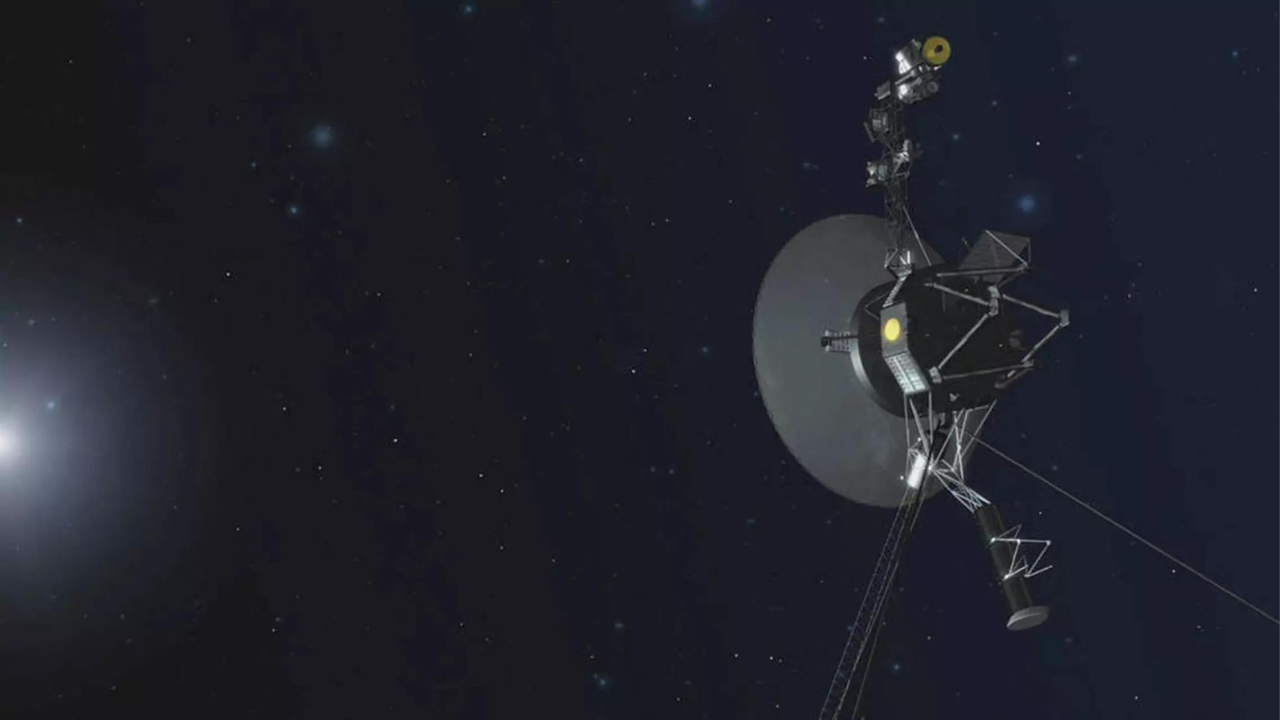NEW DELHI: Nasa has successfully restored Voyager 1 to working order several months after it encountered a grave computer problem. The spacecraft, which has been transmitting data about the outer planets and the far reaches of the solar system for nearly fifty years, faced a significant issue that threatened its mission.
“The spacecraft has resumed gathering information about interstellar space,” Nasa announced, bringing relief and joy to the space community.
The problem, which emerged in November, involved the spacecraft’s ability to send coherent engineering and science data back to Earth. Engineers spent months diagnosing and resolving the issue. This process was particularly challenging due to the nearly two-day communication delay with Voyager 1, which is over 15 billion miles from Earth.
Since last year, the space community has been anxious about the aging probe’s prospects. Attempts to fix it seemed increasingly uncertain.
In February, Suzanne Dodd, the Voyager mission project manager, described the problem as “the most serious issue” the probe had faced since she began leading the mission in 2010.
Launched in 1977 along with its twin, Voyager 2, Voyager 1 embarked on a mission to explore the outer planets. The unique alignment of planets at the time allowed the probes to visit Jupiter, Saturn, Uranus, and Neptune by leveraging each planet’s gravity to propel them to the next destination.
After completing its primary mission, Voyager 1 continued its journey towards the solar system’s edge. In 1990, it took the famous “pale blue dot” photo, capturing Earth as a tiny speck in the vastness of space.
In 2012, Voyager 1 became the first human-made object to enter interstellar space. Since then, it, along with its twin Voyager 2, which followed six years later, has been collecting invaluable data about the heliosphere, the region of space influenced by the sun.
Each Voyager spacecraft carries a golden phonograph record filled with sounds and images depicting life on Earth, intended to be discovered by potential extraterrestrial civilizations.
In April, Nasa reported significant progress in restoring Voyager 1, which had started sending back “usable” data about its engineering systems and health. By late last month, they managed to restore functionality to two of Voyager 1’s science instruments, enabling it to continue its mission and send back science data.
On Thursday, Nasa revealed that it had fully restored the remaining science instruments, bringing Voyager 1 back to normal operations.
Despite this success, Voyager 1’s extended mission could be short-lived. Nasa had estimated that the nuclear-powered generators on both Voyager 1 and Voyager 2 might expire around 2025. However, Voyager 1’s recent achievements show its capacity to defy expectations.
“The spacecraft has resumed gathering information about interstellar space,” Nasa announced, bringing relief and joy to the space community.
The problem, which emerged in November, involved the spacecraft’s ability to send coherent engineering and science data back to Earth. Engineers spent months diagnosing and resolving the issue. This process was particularly challenging due to the nearly two-day communication delay with Voyager 1, which is over 15 billion miles from Earth.
Since last year, the space community has been anxious about the aging probe’s prospects. Attempts to fix it seemed increasingly uncertain.
In February, Suzanne Dodd, the Voyager mission project manager, described the problem as “the most serious issue” the probe had faced since she began leading the mission in 2010.
Launched in 1977 along with its twin, Voyager 2, Voyager 1 embarked on a mission to explore the outer planets. The unique alignment of planets at the time allowed the probes to visit Jupiter, Saturn, Uranus, and Neptune by leveraging each planet’s gravity to propel them to the next destination.
After completing its primary mission, Voyager 1 continued its journey towards the solar system’s edge. In 1990, it took the famous “pale blue dot” photo, capturing Earth as a tiny speck in the vastness of space.
In 2012, Voyager 1 became the first human-made object to enter interstellar space. Since then, it, along with its twin Voyager 2, which followed six years later, has been collecting invaluable data about the heliosphere, the region of space influenced by the sun.
Each Voyager spacecraft carries a golden phonograph record filled with sounds and images depicting life on Earth, intended to be discovered by potential extraterrestrial civilizations.
In April, Nasa reported significant progress in restoring Voyager 1, which had started sending back “usable” data about its engineering systems and health. By late last month, they managed to restore functionality to two of Voyager 1’s science instruments, enabling it to continue its mission and send back science data.
On Thursday, Nasa revealed that it had fully restored the remaining science instruments, bringing Voyager 1 back to normal operations.
Despite this success, Voyager 1’s extended mission could be short-lived. Nasa had estimated that the nuclear-powered generators on both Voyager 1 and Voyager 2 might expire around 2025. However, Voyager 1’s recent achievements show its capacity to defy expectations.
Denial of responsibility! Swift Telecast is an automatic aggregator of the all world’s media. In each content, the hyperlink to the primary source is specified. All trademarks belong to their rightful owners, all materials to their authors. If you are the owner of the content and do not want us to publish your materials, please contact us by email – swifttelecast.com. The content will be deleted within 24 hours.


